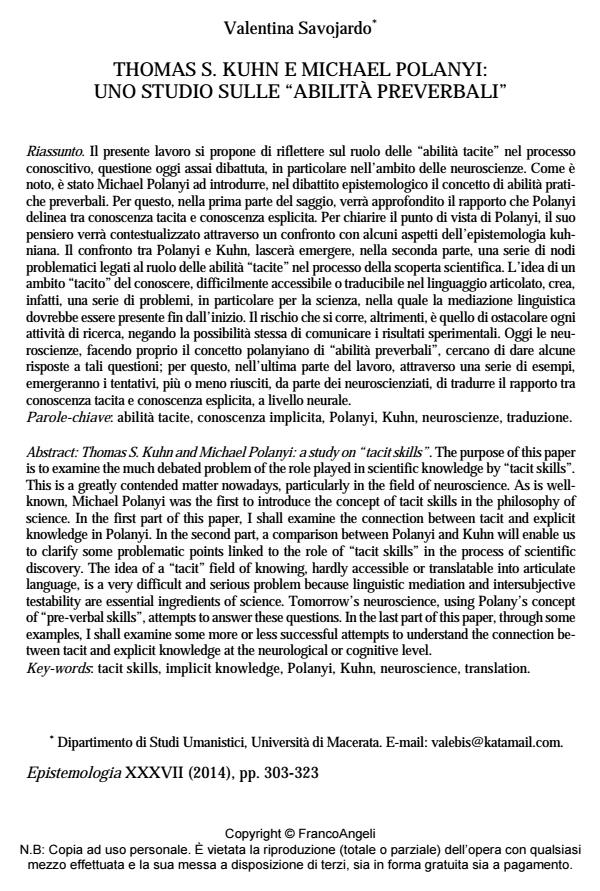Thomas S. Kuhn and Michael Polanyi: a study on "tacit skills".
Journal title EPISTEMOLOGIA
Author/s Valentina Savojardo
Publishing Year 2015 Issue 2014/2
Language Italian Pages 21 P. 302-323 File size 91 KB
DOI 10.3280/EPIS2014-002009
DOI is like a bar code for intellectual property: to have more infomation
click here
Below, you can see the article first page
If you want to buy this article in PDF format, you can do it, following the instructions to buy download credits

FrancoAngeli is member of Publishers International Linking Association, Inc (PILA), a not-for-profit association which run the CrossRef service enabling links to and from online scholarly content.
The purpose of this paper is to examine the much debated problem of the role played in scientific knowledge by "tacit skills". This is a greatly contended matter nowadays, particularly in the field of neuroscience. As is wellknown, Michael Polanyi was the first to introduce the concept of tacit skills in the philosophy of science. In the first part of this paper, I shall examine the connection between tacit and explicit knowledge in Polanyi. In the second part, a comparison between Polanyi and Kuhn will enable us to clarify some problematic points linked to the role of "tacit skills" in the process of scientific discovery. The idea of a "tacit" field of knowing, hardly accessible or translatable into articulate language, is a very difficult and serious problem because linguistic mediation and intersubjective testability are essential ingredients of science. Tomorrow’s neuroscience, using Polany’s concept of "pre-verbal skills", attempts to answer these questions. In the last part of this paper, through some examples, I shall examine some more or less successful attempts to understand the connection between tacit and explicit knowledge at the neurological or cognitive level.
Keywords: Tacit skills, implicit knowledge, Polanyi, Kuhn, neuroscience, translati
Valentina Savojardo, Thomas S. kuhn e Michael Polanyi: uno studio sulle "abilità preverbali" in "EPISTEMOLOGIA" 2/2014, pp 302-323, DOI: 10.3280/EPIS2014-002009